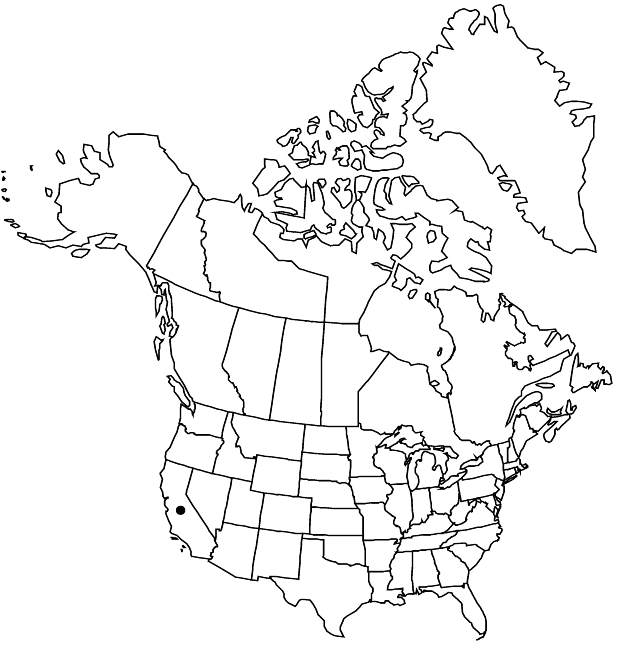Arctostaphylos regismontana
Leafl. W. Bot. 1: 77. 1933 ,.
Shrubs or trees, erect, 2–5 m; burl absent; twigs densely glandular-hairy. Leaves: petiole to 3 mm; blade pale gray-green, dull, oblong-ovate, (boatshaped, tip curved up), 3–6 × 2–3 cm, base auriculate-clasping, margins entire, plane, surfaces smooth or ± finely scabrous, glandular-hairy, glabrescent, (viscid). Inflorescences panicles, 4–6-branched; immature inflorescence pendent, (branches congested), axis 1.5–2 cm, 1+ mm diam., densely long-glandular-hairy; bracts not appressed, leaflike, narrowly oblong-lanceolate, 5–12 mm, apex acute, surfaces glandular-hairy. Pedicels 6–10 mm, finely glandular-hairy. Flowers: corolla white, conic to urceolate; ovary finely glandular-hairy. Fruits depressed-globose, 6–8 mm diam., finely glandular-hairy. Stones distinct. 2n = 26.
Phenology: Flowering winter–early spring.
Habitat: Chaparral, margins of open forests
Elevation: 100-600 m
Discussion
Of conservation concern.
Arctostaphylos regismontana is found in the vicinity of Kings Mountain in San Mateo County.
Selected References
None.
Lower Taxa
"entire" is not a number.
